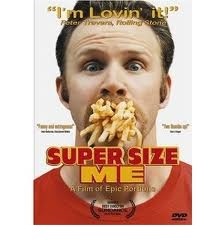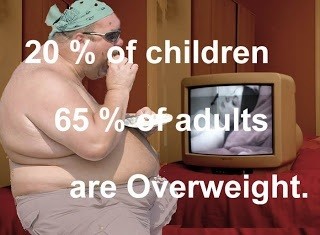Why Do We Need Food Day
Food
Life needs food. We need food to rebuild some 7 million (out of the total 25 trillion) of red blood cells our body loses every second and hence, yes, “we are what we eat.” But you cannot build living cells from whatever is available or even affordable. To survive we must eat nutritious food, not food additives.
According to the University of California-Berkeley, if we are what we eat, Americans are corn and soy. When you walk into a local Watmart you join some 100 million of Americans who shop there weekly which is about one third of the US population. (Read Managing Walmart). Hence if you know what Walmart offers, you pretty much aware of what millions of the Americans are.
Just a few examples of the popular brands that are complete junk which is always available at Walmart:
- The Hersey Company proudly boasts about manufacturing millions of miles of their Twizzlers every year. What a waste… I still keep an opened pack of Twizzlers I reviewed seven months ago. They still shine like a polypropylene plastic. No expiration date needed. Even bacteria or mold do not want Twizzlers simply because this is NOT a food!

- Again, extended shelf life is all what proud manufacturer of Lofthouse Cookies cares about, not your health. The cookies are baked with dozens of additives instead of only 6-7 nutritious ingredients.
- Kool-Aid is water sweetened with HFCS, contaminated with a bunch of chemicals, decorated with pictures of fruits and sold to our children for 99 cents per 40 FL OZ (1.2 L)! (Also read Food marketing to children and youth overview).
Good news is that, if you care, you still can make a few healthy food choices for you and your children when you shop at Walmart grocery.
Today’s US food industry suffers from “gigantism”. Big is not necessary healthy and giant is often abnormal. Remember “too big to fail.” Therefore it will not be a big exaggeration to conclude that the last 40 years of monopolization of the American food market by giants like Monsanto, Coca-Cola, McDonald’s (see Fast Food Nation) and Walmart have changed the ways Americans eat and how they live their lives. Watch full Food Inc. movie on YouTube; watch Super Size Me movie on Hulu.

Food Day: The foods we enjoy should promote, not undermine, our good health. Most Americans feast on salty, overly processed packaged foods; high-calorie sugary drinks that pack on pounds and rot teeth; and fast-food meals made of white bread, fatty factory-farmed meat, French fries, and more soda still. Such junky diets promote obesity and tooth decay, as well as diabetes, heart attacks, strokes, and cancer. As many as several hundred thousand Americans die prematurely every year due to what we eat, with medical costs running well over $100 billion.
Obesity
About one third of the US adult population (33%) and 17% children of the age 2 – 19 years are obese (read a PDF document Children’s Food Environment State Indicator Report, 2011). You may keep comforting yourself by thinking that it is a coincidence, but according to the Centers for Disease Control and Prevention (CDC), “During the past 20 years, there has been a dramatic increase in obesity in the United States and rates remain high. In 2010, no state had a prevalence of obesity less than 20%. Thirty-six states had a prevalence of 25% or more; 12 of these states (Alabama, Arkansas, Kentucky, Louisiana, Michigan, Mississippi, Missouri, Oklahoma, South Carolina, Tennessee, Texas, and West Virginia) had a prevalence of 30% or more.”
- Question: Isn’t it cheaper to buy food at Walmart and fast food chains?
- Answer: The medical costs of obesity were as high as $147 billion in 2008.
Diabetes
Nearly 26 million Americans have diabetes, according to new estimates from the Centers for Disease Control and Prevention (CDC). In addition, an estimated 79 million U.S. adults have prediabetes, a condition in which blood sugar levels are higher than normal, but not high enough to be diagnosed as diabetes. Prediabetes raises a person’s risk of type 2 diabetes, heart disease and stroke.
Note, again 26 + 79 = 105 millions of Americans or one third of the US population is diabetic or in danger of diabetes.
- Question: Isn’t it cheaper to buy food at Walmart and fast food chains?
- Answer: Diabetes is the seventh leading cause of death in the United States. People with diabetes are more likely to suffer from complications such as heart attacks, strokes, high blood pressure, kidney failure, blindness and amputations of feet and legs. Diabetes costs $174 billion annually, including $116 billion in direct medical expenses.
Cancers
Diet, physical inactivity, and obesity are related to approximately 30–35% of cancer cases. In the United States excess body weight is associated with the development of many types of cancer and is a factor in 14–20% of all cancer deaths. Physical inactivity is believed to contribute to cancer risk not only through its effect on body weight but also through negative effects on immune system and endocrine system.
Diets that are low in vegetables, fruits and whole grains, and high in processed or red meats are linked with a number of cancers. A high salt diet is linked to gastric cancer, aflatoxin B1, a frequent food contaminate, with liver cancer, and Betel nut chewing with oral cancer. This may partly explain differences in cancer incidence in different countries for example gastric cancer is more common in Japan with its high salt diet and colon cancer is more common in the United States. Immigrants develop the risk of their new country, often within one generation, suggesting a substantial link between diet and cancer. (Read also Cancer Facts and Figures, 2011).
DyeDiet makes its best to educate American public about vital importance of being very careful in selecting food for ourselves and for our children. Not the food manufacturers, not the governmental agencies, but we are the ones who are most interested in keeping us healthy as individuals and as a Nation…
DyeDiet gladly supports Dietary Guidelines for Americans, 2010 aimed “to improve the health of our Nation’s current and future generations by facilitating and promoting healthy eating and physical activity choices so that these behaviors become the norm among all individuals. Meeting this goal will require comprehensive and coordinated system-wide approaches across our Nation— approaches that engage every level of society and reshape the environment so that the healthy choices are the easy, accessible, and desirable choices for all.”
Food Day: It’s time to eat real! As health experts now recognize, the best diets consist largely of vegetables, fruit, beans, and whole grains, along with some seafood, low-fat dairy products, and poultry. That kind of diet has lots of fiber, vitamins, and minerals, but little sodium and saturated and trans fats. Whether the cuisine is classic Mediterranean, Asian, vegetarian, or American, healthy diets could lead to longer, healthier, happier lives for almost everyone.
This is why we need the nationwide Food Day! Celebrate the first American Food Day on October 24th!
Category: Food and Risk, Healthy diet






